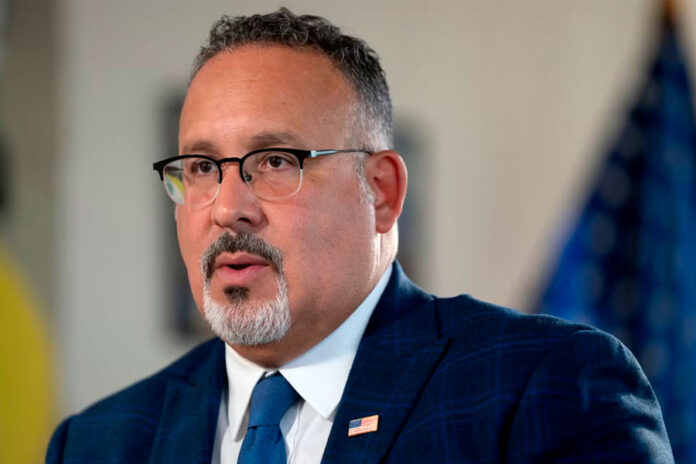
The U.S. Education Department said it has discovered a calculation error in hundreds of thousands of student financial aid applications sent to colleges this month and will need to reprocess them — a blunder that follows a series of others and threatens further delays to this year’s college applications.
A vendor working for the federal government incorrectly calculated a financial aid formula for more than 200,000 students, the department said Friday. The information was sent to colleges to help them prepare financial aid packages but now needs to be recalculated — even as the department works through a backlog of more than 4 million other financial aid applications.
A statement from the Education Department says the problem won’t affect 1.3 million applications that were processed correctly and distributed to colleges this month. Officials said they have fixed the error and it “will not affect future records.»
It’s unlikely that many students, if any, received financial aid offers based on the incorrect information since the department only began sending records in the last two weeks. Once colleges receive that information, it usually takes several weeks to assemble financial aid packages.
Students applying for college have been left in limbo this year as they await the Education Department’s overhaul of the Free Application for Federal Student Aid. The form, known as FAFSA, is used to determine eligibility for federal Pell Grants, and colleges and states use it to award their own financial aid to students.
The update was meant to simplify the form but took months longer than expected. It gives colleges less time to make financial aid offers to students, and it gives students less time to decide where to enroll.
“This is another unforced error that will likely cause more processing delays for students,” said Justin Draeger, president and CEO of the National Association of Student Financial Aid Administrators.
After so many delays, he added, “Every error adds up and will be felt acutely by every student who is counting on need-based financial aid to make their postsecondary dreams a reality.”
The latest misstep has to do with the Student Aid Index, a new formula used to determine students’ level of financial need after they submit the FAFSA application. For some students, the department forgot to factor in certain financial assets including investments, savings and total cash, according to an agency memo sent to colleges on Friday.
It resulted in a lower Student Aid Index for those students — indicating they have more financial need than they do in reality.
While the department fixes those students’ records, it’s encouraging colleges to make their own calculations and craft “a tentative aid package.»
Draeger pushed against that idea, saying colleges can only work with “valid and correct data.”
“It is not feasible or realistic to send out incorrect FAFSA data and ask thousands of schools to make real-time calculations and adjustments to the federal formula,” he said.
Advocates fear that the chaos of this year’s process could deter students from going to college at all, especially those for whom finances are a key part of the decision.
Senate Republicans are requesting a hearing with Education Secretary Miguel Cardona to discuss their “serious concerns” about the FAFSA rollout.
In a video message on Friday, Republican Sen. Bill Cassidy of Louisiana said it’s “not right” to ask colleges to fix the department’s mistake.
“You were supposed to get it done right the first time, and you were supposed to get it done right three months ago,” said Cassidy, the ranking Republican on the Senate Committee on Health, Education, Labor and Pensions. “We need more accountability, more responsibility, more confidence from the Department of Education.”
The notoriously time-consuming FAFSA form was targeted for an overhaul in 2020 through bipartisan legislation in Congress. The bill promised to simplify the form, going from 100 questions to fewer than 40, and it also changed the underlying formula for student aid, promising to expand it to more low-income students.
But the update has been marred by delays and technical glitches.
The form is typically available to fill out in October, but the Education Department didn’t have it ready until late December. Even then, the agency wasn’t ready to begin processing the forms and sending them to states and colleges, which only started this month.
Along the way, the department has scrambled to fix numerous bugs. Early on, the process failed to account for inflation properly. Another glitch blocked parents from filling out the form if they did not have a Social Security number. That meant many students who are U.S. citizens or permanent residents but whose parents are not could not apply.
The department says those problems have been fixed, and it’s now rushing to process millions of student applications and send them to colleges and states. The agency says it has processed 1.5 million applications out of about 6 million received so far.
The department “will continue delivering large volumes” of records in the coming weeks, its statement said. «We remain focused on helping students and families through this process and supporting colleges produce aid offers as quickly as possible.”




















